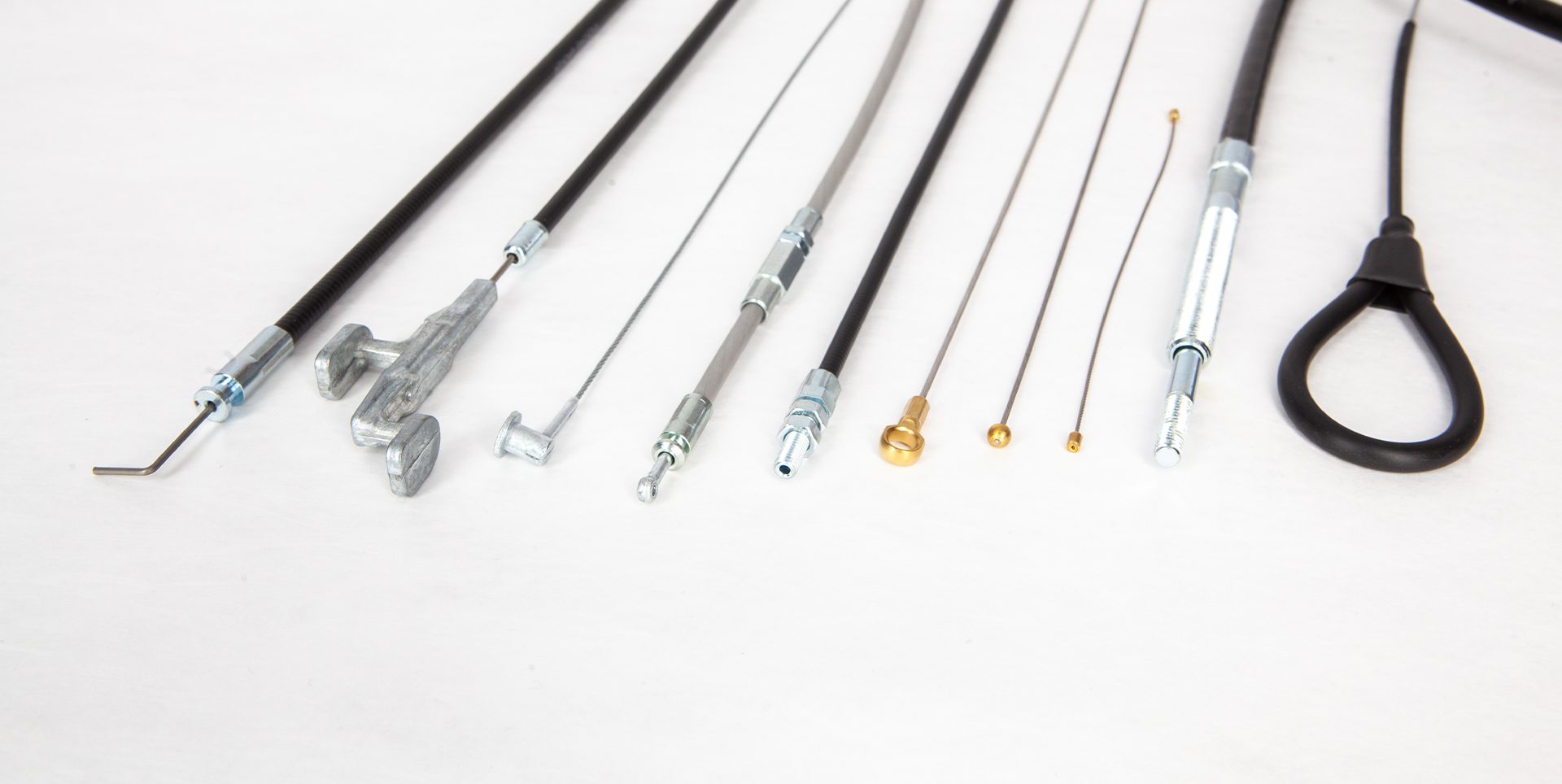Bowden cable
Bowden cables are mechanical assemblies which are used to transmit tensile , compressive and rotational forces. The design of a Bowden cable is very individual and can be specifically adapted for each application.
Here you can find some example Bowden cables.
Named after his inventor Sir Ernest Bowden, the cable application has many frequently used synonyms. Common are for example gas cable, brake cable, clutch cable, shift cable, release cable and many more.
Exemplary cable applications are to move levers, lock positions of components, decouple components, trigger movements or operations, lock elements, flip switches and levers, push components apart and much more.
The main business of Binder + Wöhrle’s Bowden cable assembly is in the area of series production. Here we manufacture Bowden cables exactly according to customer requirements. Common Industries of our clients are the automotive industry, construction industry, chemical industry, electrical industry, vehicle construction and the sanitary sector. In special cases we also manufacture small series and individual parts. The flexibly oriented assembly of Binder + Wöhrle enables the output of well over 100.000 individually designed Bowden cables per year. In total, we manufacture about 2 million actuating cables annually.
Expertise in Bowden cable manufacturing
Since 1949, Binder + Wöhrle has been manufacturing Bowden cables in a wide variety of designs and variants.
In the past, a main customer for throttle cables was the moped industry. Today, the company continues to manufacture a wide variety of throttle cables, decompression cables, starter cables, clutch cables, emergency releases and much more for the two- and four-wheeler industry.
Different variants of push-pull cables are used for car seat adjustment. These actuating cables find another major use case in furniture and office chairs.
In the sanitary sector, for example, actuating cables enable the toilet to be flushed, the bathtub stopper to be raised or the shower head to be secured.
To ensure safe handling of equipment or machines, Bowden cables are also used to lock and unlock components. For example, as an emergency lock for gas heaters from another room or to ensure that the electrical current is interrupted when the switchbox is open. We will be happy to advise you on your Bowden cable solution. Please contact Mr. Rainer Schmid.
Overview of Bowen Cable Parts
Bowden Cable Sheats
Bowden cable sheaths, also called spirals, guide the cable pull and the force applied to the cable along a defined path. The spiral sheath typically consists of a spirally wound wire which is covered with a plastic sheath. Depending on how the cable sheath is stressed and used, different variants are differentiated. The most commonly used Bowden cable sheaths are round wire sheaths, flat wire sheaths, push-pull spirals or plastic sheaths.
Cable Core – Wire Core
The cable core, also called inner cable or wire core, is the heart of every Bowden cable and is mainly responsible for the transmission of the applied force. The selection of the appropriate inner cable depends on the requirements of the individual application. Therefore, the requirements of the individual actuating cable must be determined regarding how great the force and flexibility needs to be. The inner cables are divided into thin ropes, ropes, strands and wires.
Conneting Parts for Bowden Cable Sheats
Connecting parts for Bowden cable sheaths are used to lock the actuating cable sheath in position on the housing, motor, door or chair. Individually designed connection parts allow the actuating cable to be mounted very easily so that the sheath can be clipped directly to a housing, for example.
Connecting Part for Wire Core
The cable end pieces enable a tensile, compressive or torsional force to be applied to the inner cable. This part enables the rope or inner cable to be easily fixed to the housing or lever from which the movement impulse originates. The design can be customized, from standardized turned and milled parts to individually designed injection-molded cable connecting parts.
Development of the Bowden Cable
The Bowden cable was first patented at the end of the 19th century by its inventor and namesake Sir Ernest Bowden. In his patent, he defined the invention as a mechanism for transmitting force and motion. In addition, Sir Bowden introduced the various components and their function. The components are the inner cable, the end connection of the Bowden cable core, the sheath and the end connections of the sheath. However, the structure of the individual components is hardly described and names are not specified.
Depending on the application and the requirements of the actuating cable, the individual parts can be designed according to different properties of flexibility or resistance to tensile and/or compressive forces. The combined use of Bowden cable sheath and inner cable protects the cable from environmental influences. An inner lining of the Bowden cable sheath can further minimize wear of the inner cable due to friction.
This adaptability coupled with durability opens up an almost limitless field of application for the Bowden cable in just about all areas of industry and technology.










